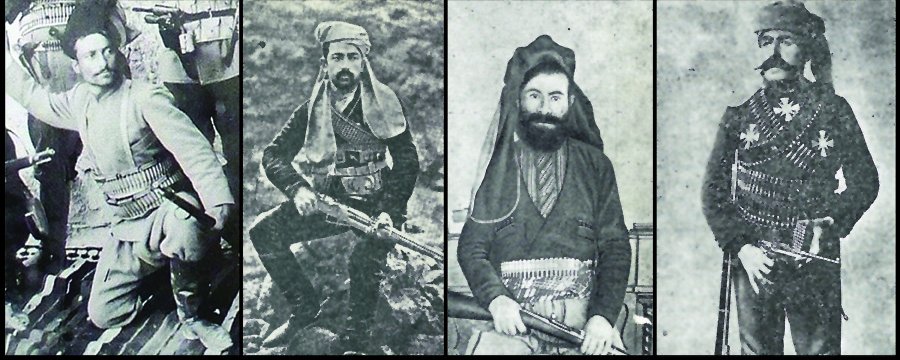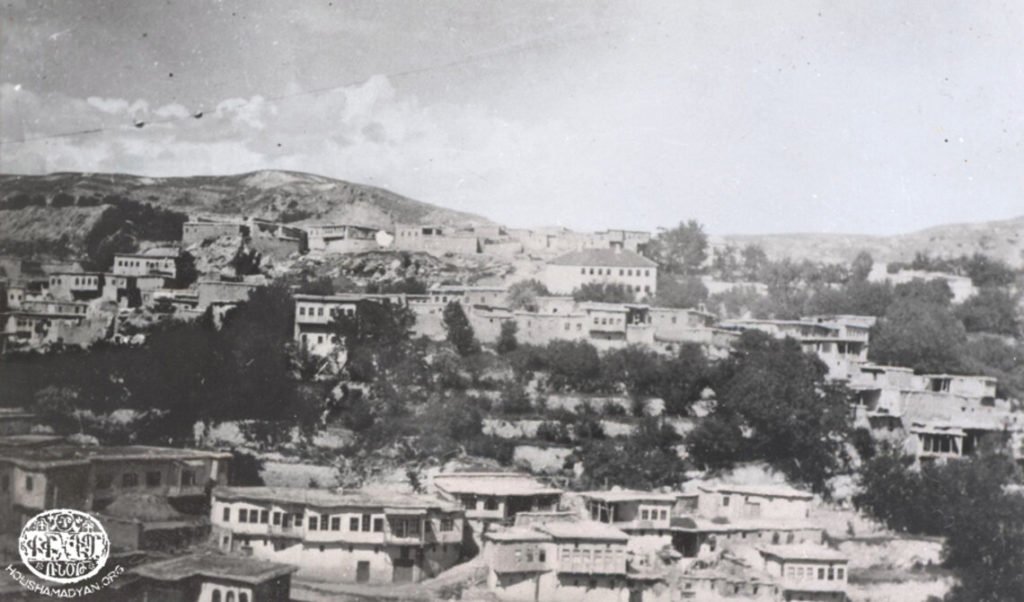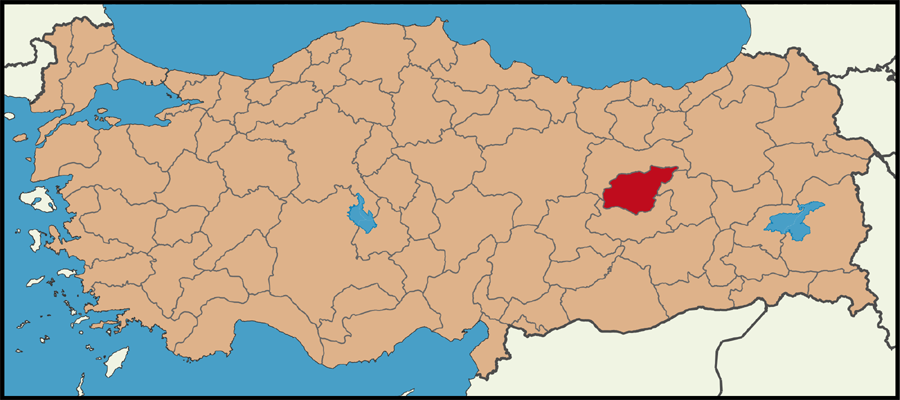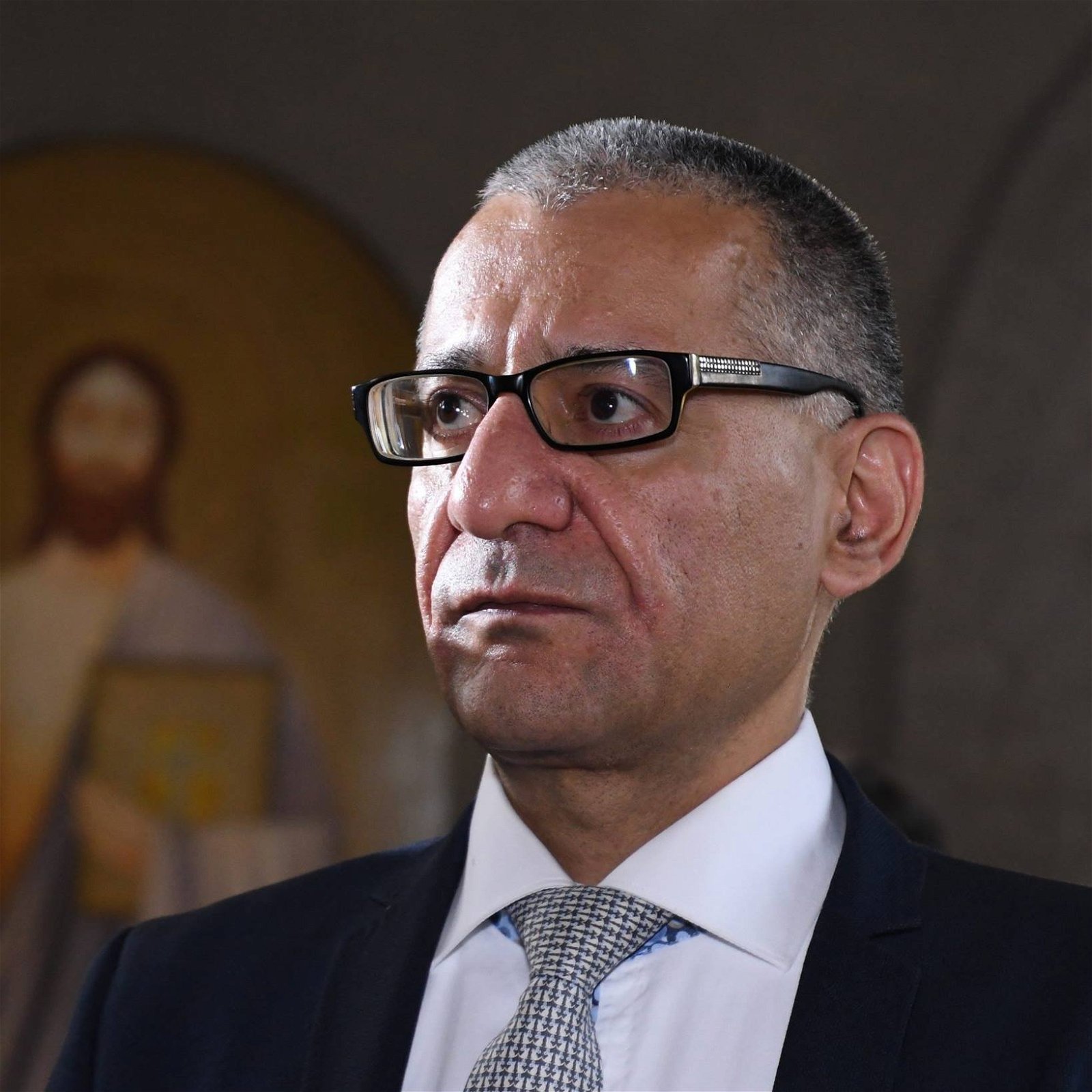Editor’s Note: The original version of this article in Armenian appeared in the September 2020 issue of Droshag.

Translated by Jirayr Momjian
Armenians have lived in the Dersim region of the historic Tsopk province since the Armenian pagan period. The temples of Anahit, Vahagn and Astghig were in Dersim.
During the Armenian Genocide, the Qizilbash (or Kizilbash, Alevi) tribes of Dersim sheltered more than 40,000 Armenians. Many Armenians who escaped the 1915 Genocide and took refuge in Dersim converted to Islam and accepted the Alevi religion, adopting the way of life of the Dersim natives.
In 1938, the Dersim tribes, led by Seyid Riza, resisted Turkish pressure. According to the modern-day intellectuals of Dersim, thousands of converted Armenians took up arms alongside the people of Dersim during the 1938 revolution. As for the massacres by the Kemalist army following the sad end of the uprising, Armenians were also killed and massacred along with the people of Dersim. Today, some European historians accept the theory that the planned massacre of 70,000 Alevis and Armenians of Dersim by Kemalist forces in 1937-38 corresponds to a genocide.

In the first decade following the founding of the Armenian Revolutionary Federation (ARF), or Dashnaktsutyun, Dersim was in the party’s focus. The Second Congress of the ARF Dashnaktsutyun included the Dersim province of the historical Tsopats region in the organizational work for the national liberation struggle, since it had a mixed Armenian and Alevi-Qizilbash population.
Armenian and foreign historians confirm that several Dersim Alevi tribes are descendants of indigenous Armenians who converted to the Alevi branch of the Shiite sect of Islam at the beginning of the 17th century. The Miragian Armenian tribe survived until the 19th century in the mountainous region of Dersim.
According to Matti Moosa, the Assyrian historian who specializes in Shiite Islam and the Shiite religion, thousands of Armenians have settled in Dersim over the centuries to avoid religious persecution and have converted to the local Qizilbash Shiite religion while also preserving several traditions of the Christian religion. (1) The rebellious population of mountainous Dersim has been opposed to the Ottoman state for centuries.
The dispatching of ARF kortziches1 to Dersim gained momentum between 1896-1898. Vaspurakan, Sasun and Daron were the focus of the party’s armed struggle during that period. The issue of organizing Dersim was proposed for the first time during the party’s Second Congress, which was attended by the founding generation of the ARF.
The ARF Caucasus Regional Assembly was held on December 27, 1896. During the Assembly’s 22 sessions, the issues of organizing the regions of Karazhayr (Dersim) and Lernavayr (Cilicia) were discussed. “Considering the impregnable position of Lernavayr, the revolutionary potential of the local people, other conveniences and advantages in general, the meeting decided to pay serious attention to this region and send an organizing and leading force there. Regarding Karazhayr, some of the members of the assembly expressed skepticism, reservations since for them it is impossible to fully believe in the sincerity and permanent friendship of the people of Zhayr (Karazhayr), and the work there may not be considered Armenian, etc. However, three participants, by bringing convincing arguments from both the past and the present, dispelled all doubts by pointing to the fact that the desired undertaking was already underway, it was half completed, since Keri and his group had reached Karazhayr and had been well received there. Thus, the assembly decided to consider Zhayr as a center of activity and to pay attention to it within the limits of the available financial means.” (2)
Keri of Dersim (Ruben Shishmanian) was one of the first supporters of the rapprochement of Armenians and the Alevis of Dersim and one of the organizers of the first haytuk (partisan) group in Dersim.

On the eve of the ARF Caucasus Regional Assembly, by the order of the ARF Bureau, Garabed Ghumrigian was sent from the Caucasus to Yerznga as a kortzich with a special mission to establish cooperation with the Alevis of Dersim. (3)
In 1896, in a letter dated March 29 to the ARF Central Committee of Garin, Keri confirms that he had received 25 gold coins from the Central Committee, which would be allocated to the ARF’s plans to take root in Dersim. In the same letter, Keri writes that 250-300 gold coins are needed to implement the party program for Dersim. (4) In a letter to the Tabriz Committee dated January 10, 1897, the haytuk leader Tigran Deroyan refers to Keri of Dersim. “Keri has crossed into Dersim (Karazhayr), Gharamelik is also there. There is hope for success in those places. 1000 manats and 100 Ottoman gold have been allocated for that purpose. The Trabzon Committee is also part taking in that work.” (5)
Combining the above facts, it becomes clear that the ARF sought to establish and expand its activities in Dersim, both through kortziches who were missioned to Dersim and by providing financial support for the success of that mission.
Keri of Dersim participated in the ARF Second Congress held in Tiflis in 1898. The issues of negotiations with Sultan Hamid, the founding of Droshag and obtaining financial support from wealthy Armenians would be discussed at that meeting (6). This most pivotal and historic of the Supreme Assemblies of the ARF, at which 19 representatives and 13 kortziches were present, included Kristapor, Rosdom, Zavarian, Arshag Vramian, Armen Garo and Nigol Tuman. As a kortzich, Keri, who was invited to the meeting, stressed in his speeches and reported the need to cooperate with the Zaza-speaking Alevi tribes of Dersim so that the revolution against the Ottoman Empire would become more extensive and multipolar. The Congress decided to continue the system of using and sending kortziches, and a budget was allocated for the implementation of that plan.
After the meeting, Keri went to Dersim. Being well versed with the Zaza language of the Qizilbash, Keri met with Seyid Riza (1862-1937), the leader of the Qureshan and Hasanan Qizilbash tribes of Dersim.
At this point, the ARF’s priority was to organize the self-defense of the Armenian population in Vaspurakan, Daron and Sasun, which slowed down the Dersim program. The party’s funds were allocated to boost the activities of the above-mentioned three organizational districts. (7)
In 1900, Keri returned to Yerznga where he was soon accused by the Turkish authorities of having killed a Kurdish agha (official). After being imprisoned for three years, on July 10, 1903, he was taken to the Tsoren Square of Yerznga by Turkish soldiers to be hanged. Keri of Dersim would not allow the executioner to do his job. With his hands, he put the gallows around his neck and kicked the chair with his feet, thus bravely facing death. (8)
One year after Keri of Dersim’s death, ARF’s official media, Droshag, highlighted the positive consequences of Keri’s work as a kortzich and the existing cooperation between the ARF and the Alevi tribes. The article entitled “Letter from Keghi” talks about the self-defense of the village of Khupus in the Keghi province of the lowlands of Dersim, during which the Dashnaktsakan fighters, together with Dersim’s Haydar Bey and his armed men, resisted and repulsed the attack of the Turks and Kurds. “Times have changed. During the massacre, when the Turks of Palu and the Kurds of Shekhasan plundered many parts of Keghi and came to our village of Khupus (Khupus is a totally Armenian populated village with 400 dwellings), the son of Shahhusseyn Bey of the Khuzujan province of Dersim, Haydar Bey, who also holds the position of governor of the Turkish government, came to our village with his men and resisted the mob with some of our young Armenians. When the Turks and Kurds saw that our village was defending itself, they departed leaving behind a few dead and wounded Kurds and Turks. Thanks to Haydar Bey and several Dashnaktsakan, the village on that occasion was saved from massacre and plunder. Haydar Bey said ‘At first in the eyes of the Turkish government we were a sovereign tribe, but in the time of Dervish Pasha, in the days of our ancestors, by the order of the sultan, he came to conquer Dersim. The Turkish Pasha came, but we, the Zaza tribes, do not pay tribute to the Turkish government, nor do we want to become an instrument in the hands of the government and oppress our Armenian neighbors. If ever a riot breaks out, like it happened last year, I will defend the Armenians wherever needed.’ The Zaza Kurd of Dersim is a defender of his Armenian neighbor, while our rich Armenians abandon their brother of the same nation and do everything in their power to appear in the eyes of the authorities devoted to the government.” (9)
During this period, mission trips to Dersim by party members appear to have been gaining momentum again.
The petition dated October 18, 1905 and written by the ARF Khoradzor (Keghi) Committee to the ARF Central Committee of America mentions the need for ARF kortziches. The request is confirmed by the seal of the Garni ARF Central Committee. “Our comrades of Keghi are in contact with Trabzon, Garin and Yerznga and are establishing liaisons with those around them as far as Palu and Charsanchak. Our kortzich comrade there is preparing to visit Dersim this summer, only if we can cover the costs. If a certain amount of money is allocated annually, through this committee, we will be able to gradually organize almost all the provinces surrounding Khoradzor.” (10)
The geographical importance of Keghi should be emphasized here because the administrative area of Keghi, with more than 50 Armenian-populated villages, borders the province of Dersim directly from the west. Meshet Avedis (Avedis Kazanjian) was a Dashnak kortzich acting in the administrative area of Charsanjak in the lowlands of Dersim. A native of Dersim, he was sent on a special mission to Dersim in 1904, but he was arrested in Keghi by the Turkish government. After being imprisoned for four years, he was pardoned at the time of return of the constitution. In 1909, he participated in the Regional Assembly of the Lernasar ARF Central Committee, during which a special decision was made to organize the villages of Charsanjak. The mission is entrusted to Meshet Avedis and Tigran Chitjian, who immediately set to work and left for Charsanjak. (11) This brave fedayee, who took part in the battles of Sasun during the days of the Genocide, was arrested in Dersim by Turkish soldiers who tied a heavy stone around Meshet Avedis’ neck and pushed him off the Mndzur bridge.
Thanks to kortziches like Meshet Avedis, the ARF, on the eve of the Armenian Genocide, had an organizational presence in Metskert, Keghi and elsewhere in the lowlands of Dersim. Meshet Avedis’ collaborator Giragos Boyajian founded the ARF Dajar Committee in the village of Svchogh in Dersim. (12) In Kevork Yerevanian’s voluminous memoir, “History of the Armenians of Charsanjak,” among the victims of the Genocide in the village of Berri in the lowlands of Dersim are ARF party members, including Armenak Melidosian, a history teacher; Petros Bujikian, a participant in the transport of weapons; Hayk Yenovkian, the chairman of the educational committee; and Mardiros Dagesian, a member of the Berri local city council.
Many historical sources who have studied the Armenian Genocide confirm that more than 30,000 Armenians took refuge in mountainous Dersim during the days of the Medz Yeghern. The testimony about the Qizilbash Alevis of Dersim and their kindness toward the Armenians is noteworthy reading in the Chmshkatsag bulletin published in Droshag on November 20, 1906: “… the free children of the Azad Mountain are not subject to the Turkish yoke and have the right to look down on the Armenians from the height of their mountains and will surely be pleased to see that although their ancestors changed their religion, renounced the Armenian name, but are now free, proud, and imperious … they generally hate the Sunni Turks and are sympathetic to Christians, especially Armenians, with whom they are in contact in many places.” (13)

The ARF worked closely with tribal leader Zeynal, a member of the Khormink tribe of the Bingeol province east of Dersim. The first contacts with the people of Khormink was established by Goryun of Koms who, after the second uprising of Sasun, moved to Bingeol to meet the tribal leader, head of the Niyazi ashirat (tribe), and organized a Kurdish committee. (14) It should be noted that Goryun was missioned to the Caucasus and organized the Zangezur and Artsakh regions in 1906. The first meeting between Goryun and Zeynal took place in 1905. After the constitution of 1908, Ruben (Der Minasian) and Goryun went to Bingeol and strengthened the cooperation with Zeynal. To strengthen the Armenian-Qizilbash cooperation, Zeynal suggested organizing mixed marriages between the two peoples. (15)
The ARF Turan Highland Regional Assembly held in Saint Garabed Monastery of Mush decided to consider Zeynal as a representative of the ARF in the region in the sphere of relations with the Qizilbash people. (16)
The above-mentioned archival documents and testimonies confirm that the ARF included the policy of cooperating and forming alliances with the Qizilbash tribes in its strategy of organizing the Armenian liberation struggle movement. At the same time, the work of organizing the Armenian settlements in the geographical areas of those tribes was a subject of special attention.
As the title of this article states, the mentioned documents are a few examples of the historical evolution of cooperation between the ARF and the Alevi tribes of Dersim. It should be noted, however, that three decades before the Dersim uprising of 1937, if the leader of the uprising and leader of the Dersim people, Seyid Riza, had collaborated with the ARF fedayee Keri, there is a high probability that the cooperation with the ARF would have continued during the Dersim uprising.
The Dashnaktsutyun’s historical sources mention Hratch Papazian, a participant in Operation Nemesis and later a member of the Syrian parliament, as the member of the party in contact with Dersim in the 1930s. Unfortunately, the prolific Dashnak comrade Papazian did not leave any memoirs or literary contributions about that topic. Probably, it is now time that the history of the ARF-Dersim cooperation in the 1930s are seriously studied through the folds of the ARF archives.

—
1. Party activists missioned to organize, lead self-defense and revolutionary actions in the homeland
—
Annotations:
- Matti Moosa, Extremist Shiites. The Ghulat Sects, New York, 1987, p. 433.
- Avo, Revolutionary Album, Beirut, 1966, p. 333.
- Lazian K., Personalities of the Armenian Liberation Movement (Դէմքեր հայ ազատագրական շարժումէն), Montebello, 1993, p. 15.
- ARF Archives (Դիւան Հ.Յ. Դաշնակցութեան) Volume A, Boston, 1934, p. 325.
- ARF Archives (Դիւան Հ.Յ. Դաշնակցութեան) Volume B. Boston, p. 353.
- ARF Archives (Դիւան Հ.Յ. Դաշնակցութեան) Volume B. Boston, p. 226.
- Lazian K., Personalities of the Armenian Liberation Movement (Դէմքեր հայ ազատագրական շարժումէն), Montebello, 1993, page 17:
- Droshag, 1903, September, No. 9, p. 126.
- Droshag, 1904, June, number 6, page 82.
- Themes For the history of the ARF (Նիւթեր Հ.Յ. Դաշնակցութեան պատմութեան համար), Volume D, Beirut, p. 190.
- Yerevanian K., History of the Armenians of Charsanchak (Պատմութիւն Չարսանճաքի հայոց), Beirut, 1956, p. 406.
- ibid., P. 213.
- Droshag, 1907, February, number 2, page 20.
- Droshag, 1926, August-October, No. 8-10, pp. 255.
- Ruben, The Memoirs of an Armenian Revolutionary (Հայ յեղափոխականի մը յիշատակները), Volume E, Tehran, 1982, p. 67.
- Ruben, The Memoirs of an Armenian Revolutionary (Հայ յեղափոխականի մը յիշատակները), Volume D, Tehran, 1982, p. 27.



Thank you for this I knew none of what has been written . My Great Grandfather was Manouk Papazian of Mersina ,Cilicia [Southwest of Adana] he had a Greek wife . They were both killed by Turkish Chetes [Irregulars ] after the French left . My Grandfather Nicoghos Papazian had a Greek Cypriote wife .He took both the Armenian and Greek relatives on a ship to Alexandria ,Egypt where he was encourage to change our family name to the Greek equivalent of Papadopoulos. My mothers people are also Greek from Symi ,Dodecanese Islands ,Greece . My parents took me to New Zealand in 1962 aged 6 . I am proud to be of both Armenian and Greek descent long live Hayastan and HELLAS… Nicholas John Papadopoulos [ Had my Papik not changed our Patronymic I would have been:- Nicoghos Hovannes Papazian].